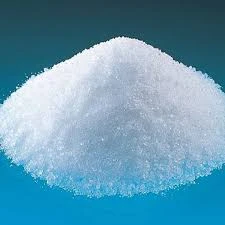Understanding HPMC Hydroxypropyl Methylcellulose and Its Applications
Hydroxypropyl Methylcellulose (HPMC) is a widely used polymer in various industries, particularly in pharmaceuticals, food, and construction. This semi-synthetic derivative of cellulose is derived from natural cellulose through a series of chemical modifications, including hydroxypropyl and methyl substitution. HPMC possesses unique properties that make it an invaluable ingredient across a myriad of applications. This article will explore the characteristics, benefits, and diverse applications of HPMC.
Properties of HPMC
HPMC is a white, odorless, and tasteless powder that is soluble in cold water. When dissolved in water, it forms a clear, viscous solution. The viscosity of the HPMC solution can be adjusted by altering the degree of substitution during its production process. This property is crucial as it allows HPMC to be tailored for specific applications ranging from thickening agents in food to binders in pharmaceutical formulations.
One of the key properties of HPMC is its ability to form films, which provides excellent moisture retention. This characteristic is particularly significant in pharmaceutical applications, where it is used in creating sustained-release formulations. The polymer’s hydrophilic nature ensures that it retains water, leading to prolonged drug release profiles. Furthermore, HPMC is non-toxic and inert, making it suitable for use in various products that come into contact with human consumption.
Applications of HPMC
hpmc cellulose hydroxypropyl methyl

1. Pharmaceutical Industry In the pharmaceutical sector, HPMC is predominantly used as a binder and a film-coating agent. It is particularly valuable in the formulation of tablets, capsules, and other drug delivery systems. Its ability to control drug release rates makes it an important ingredient in sustained-release formulations. Additionally, HPMC is used to improve the stability of medications, prevent moisture ingress, and enhance the overall bioavailability of drugs.
2. Food Industry HPMC is employed in the food industry as a food additive. It acts as a thickener, emulsifier, and stabilizer, ensuring the right texture and consistency in various food products. Common applications include its use in sauces, dressings, and baked goods. It can also serve as a fat replacer in low-fat foods, improving mouthfeel without adding calories, which appeals to health-conscious consumers.
3. Construction Industry In construction, HPMC is often included in mortars, plasters, and tile adhesives. It enhances workability, reduces water absorption, and improves adhesion properties. HPMC allows for longer open times, giving contractors more flexibility to work with the materials before they set. Its water-retention ability also helps in achieving optimal curing conditions, which is critical for the strength and durability of construction materials.
4. Cosmetics and Personal Care HPMC is used in the formulation of various cosmetic products due to its emulsifying and thickening properties. It helps stabilize oils and water mixtures, improving the texture and application of lotions, creams, and gels. Furthermore, its film-forming characteristics enhance the lasting power of makeup products.
Conclusion
Hydroxypropyl Methylcellulose (HPMC) stands out as a versatile polymer that bridges numerous industries with its unique properties. From pharmaceuticals to food production, construction, and cosmetics, HPMC plays a pivotal role in enhancing the efficacy, stability, and quality of a wide range of products. Its ability to be customized for various applications continues to drive innovation and growth in multiple sectors. As we move towards more sustainable and health-conscious products, the significance of HPMC is likely to increase, making it a crucial ingredient in the future of material science and formulation chemistry.
-
The Application and Significance of Construction RdpNewsMay.19,2025
-
Industrial Grade HpmcNewsMay.19,2025
-
Building Coating Adhesive Building Coating Adhesive HpmcNewsMay.19,2025
-
Application Of Hpmc For Detergent For Detergent In DetergentsNewsMay.19,2025
-
Application Of Hpmc Cellulose In Cement-Based MaterialsNewsMay.19,2025
-
Application Of High Quality Hpmc For Construction In The Field Of ConstructionNewsMay.19,2025




